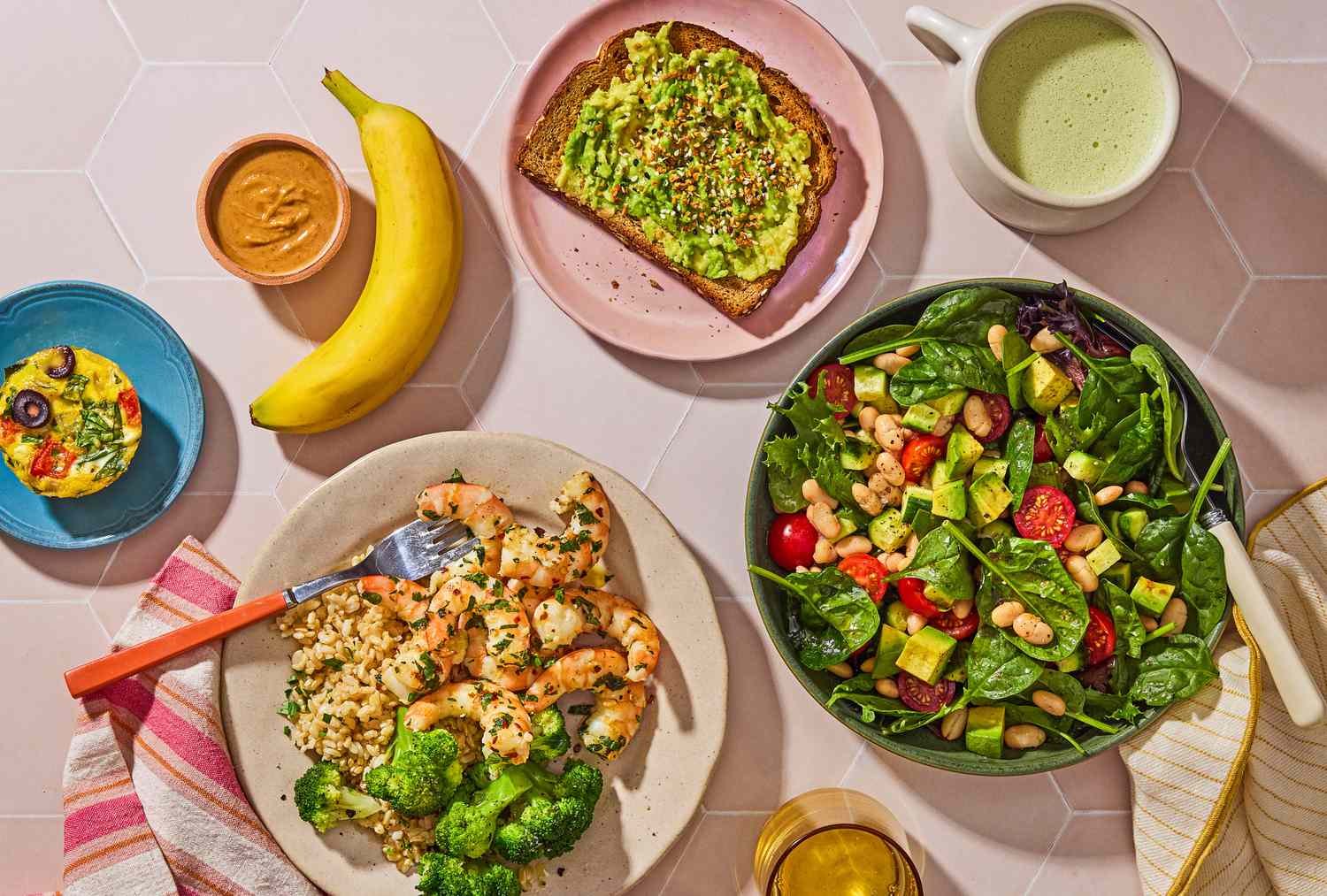To flatten your stomach, focus on a balanced diet. Reduce processed foods and increase whole foods.
Many people dream of a flat stomach. It’s not just about looks; it’s about health too. Diet plays a key role in achieving this goal. What you eat can make a big difference in your belly size. Some foods cause bloating and weight gain, while others help reduce it.
Understanding which foods to include and avoid is crucial. It’s not about strict dieting but making smart choices. Eating the right foods can help you feel lighter and more energetic. This journey begins with simple dietary changes. Let’s explore how you can start today. Discover foods that can help you achieve a flatter stomach.
Balanced Diet Essentials
Thinking about flattening your stomach? Let’s talk about how a balanced diet can help you achieve this goal. A balanced diet isn’t just about cutting calories or avoiding certain foods—it’s about making smart choices that fuel your body and support your goals. You might be surprised how a few dietary changes can make a big impact on your waistline.
Whole Foods Focus
Switching to whole foods is a game-changer. Whole foods are foods that are as close to their natural form as possible. They are packed with nutrients and free from added sugars and unhealthy fats. Think fresh fruits, vegetables, whole grains, and lean meats. These foods help keep you full longer and provide the energy you need for workouts and daily activities.
I once swapped my usual breakfast cereal for oatmeal topped with fresh berries. Not only did it taste better, but I noticed I stayed full longer and snacked less. You can make simple swaps like this to help manage your appetite and support your stomach-flattening journey.
Are you still eating a lot of processed foods? Try gradually introducing more whole foods into your meals. You’ll likely find that your cravings for less healthy options decrease, and your energy levels soar.
Nutrient-rich Meals
Creating meals rich in nutrients is essential. Focus on meals that include a balance of protein, healthy fats, and carbohydrates. These nutrients work together to keep you satisfied and support muscle growth and repair. A nutrient-rich meal might include grilled chicken, quinoa, and steamed broccoli.
One day, I tried a simple salad with mixed greens, avocado, and grilled salmon. The healthy fats from the avocado and protein from the salmon kept me full and energized. You can experiment with different combinations to find what works best for your taste and lifestyle.
How often do you think about the nutrients on your plate? Consider planning meals around nutrient density rather than calorie count. You’ll likely notice improvements not only in your waistline but also in your overall well-being.
Reducing Processed Foods
Reducing processed foods is a crucial step in your journey to flatten your stomach. It’s about making conscious choices that benefit your health and waistline. Processed foods are often loaded with hidden sugars, unhealthy fats, and additives that can sabotage your efforts.
Consider how often you reach for a quick snack or meal from a package. These convenient options might save you time, but they could be hindering your progress. Processed foods are often stripped of their natural nutrients, leaving you with empty calories.
Think about the impact of these foods on your energy levels and digestion. Ever felt sluggish after a fast-food lunch? That’s your body struggling with low-quality fuel. Reducing processed foods can lead to more energy and better digestion, key factors in achieving a flatter stomach.
Imagine the benefits of swapping your usual processed snacks for fresh alternatives. A fresh apple or a handful of nuts can satisfy your hunger and provide essential nutrients. This simple change can make a big difference in your daily calorie intake.
Avoiding Additives
Have you ever checked the ingredient list of your favorite packaged foods? You might be surprised by the additives and preservatives. These can cause bloating and make it harder to achieve that flat stomach.
Think about how these additives affect your body’s natural processes. They can disrupt digestion and lead to inflammation. By avoiding them, you can support your body’s ability to burn fat more efficiently.
Consider how much better your body feels when you eat clean. Removing additives can help you feel lighter and more energized, making your workouts more effective.
Choosing Fresh Ingredients
Picture your kitchen filled with fresh vegetables, fruits, and lean proteins. These ingredients are packed with nutrients and free from harmful chemicals. They can help you control your calorie intake and improve your overall health.
What if you made a habit of visiting your local farmers market? Fresh ingredients not only taste better, but they also support local producers. Plus, they’re less likely to contain the additives found in processed foods.
Reflect on the difference in your meals when they’re made from scratch. Cooking with fresh ingredients can be a rewarding experience, offering you control over what goes into your body.
Are you ready to make these dietary changes and work towards a flatter stomach? The choice is yours. Start today and notice the positive impact on your body and energy levels.
Portion Control Strategies
Portion control is key to achieving a flatter stomach. It helps manage calorie intake and supports digestion. By adopting effective portion control strategies, you can enjoy meals without overeating. Here, we explore simple techniques to guide your journey.
Mindful Eating Practices
Mindful eating means paying attention to your food. Focus on the flavors, textures, and smells. Avoid distractions like phones or TV during meals. This helps you recognize when you’re full and prevents overeating. Chew slowly and savor each bite. This practice can lead to better digestion and satisfaction.
Serving Size Awareness
Understanding serving sizes is crucial. Learn what a healthy portion looks like. Use smaller plates to naturally reduce portions. Measure your food if necessary. This creates a visual cue for how much to eat. Avoid second servings by preparing just enough food. This keeps your calorie intake in check and supports your stomach flattening goals.
Increasing Fiber Intake
Boosting fiber intake can help flatten your stomach by improving digestion and reducing bloating. Opt for fruits, vegetables, and whole grains to increase daily fiber consumption. Simple swaps like brown rice over white rice can make a noticeable difference.
Increasing fiber intake can be a game-changer for those looking to flatten their stomach. Adding more fiber to your diet not only aids digestion but also helps keep you feeling full longer, reducing the urge to snack. Just a few small changes in your daily meals can have a lasting impact on your waistline.Benefits Of Fiber
Fiber is essential for a healthy digestive system. It helps to regulate bowel movements, which reduces bloating and discomfort. Moreover, a fiber-rich diet has been linked to lower cholesterol levels and better blood sugar control, making it beneficial for overall health. A personal note: when I started eating more fiber, I noticed a significant drop in my mid-morning cravings. Fiber kept me satisfied, so I didn’t reach for those unhealthy snacks. Have you noticed how some days you feel full without snacking? That’s the power of fiber at work.High-fiber Food Choices
Adding more fiber to your meals doesn’t have to be complicated. Consider including foods like beans, lentils, and whole grains in your diet. Fruits and vegetables are also excellent sources of fiber; think apples, pears, and broccoli. Here’s a quick tip: swap your white rice with quinoa or your white bread with whole-grain options. These small substitutions can make a big difference. Take a moment to look at your current diet. How many of these high-fiber foods are you already eating? By gradually adding more fiber-rich foods, you can pave the way for a flatter stomach and better overall health. Remember, it’s important to increase fiber slowly and drink plenty of water to help your body adjust. Are you ready to give your diet a fiber boost today?Hydration Importance
Staying hydrated helps control hunger and supports metabolism, aiding efforts to flatten the stomach. Drinking water before meals can reduce calorie intake, while avoiding sugary drinks prevents bloating.
Hydration is crucial when aiming to flatten your stomach. It not only aids in digestion but also helps in reducing bloating. Drinking enough water can make a noticeable difference in how your stomach feels and looks. ###Water Consumption Tips
Set a daily water goal and track your intake. You might be surprised at how little you drink without realizing it. Try keeping a reusable water bottle with you at all times. Make water interesting by adding slices of lemon, cucumber, or mint. This can encourage you to drink more. It’s like giving your water a refreshing twist without the extra calories. Listen to your body. Often, thirst can be mistaken for hunger. Next time you feel the urge to snack, drink a glass of water first and see if the craving passes. ###Limiting Sugary Drinks
Sugary drinks are a sneaky source of extra calories. They can quickly sabotage your stomach-flattening efforts. Swap sodas and sweetened teas for water or herbal teas. If you love your morning juice, consider diluting it with water. This can cut the sugar and calories in half while still providing flavor. Think about your coffee habits. Are you adding sugar-laden creamers or syrups? These can add up quickly. Try switching to black coffee or using a splash of unsweetened almond milk. What changes can you make today to hydrate better and reduce those sneaky sugary culprits? Your stomach will thank you!
Credit: www.instagram.com
Protein-rich Foods
Protein-Rich Foods can be a game-changer in your quest for a flatter stomach. They help build muscle, keep you full longer, and boost your metabolism. If you’re tired of feeling sluggish or struggling with stubborn belly fat, adding more protein to your diet might be the answer.
Lean Protein Sources
Choosing lean protein sources is essential. They offer all the benefits without the extra calories or fat. Think about foods like chicken breast, turkey, and fish. These are not only tasty but also versatile.
Eggs are another fantastic option. They’re easy to prepare and can be added to many dishes. You can even snack on boiled eggs for a quick protein fix.
Consider plant-based proteins too. Lentils, chickpeas, and tofu are excellent alternatives. They can be just as satisfying and are perfect for vegetarian meals.
Protein In Every Meal
Make protein a staple in every meal. It’s not about eating huge portions; it’s about consistency. Start your day with a protein-rich breakfast like Greek yogurt or a smoothie with protein powder.
Lunch and dinner can be packed with protein as well. Grilled chicken or a hearty bean salad can do wonders. You might be surprised at how much more energized you feel.
Snacks matter too. Swap chips for nuts or seeds. They provide a protein boost and keep hunger at bay. Are you getting enough protein in each meal?
As you make these changes, think about how your body responds. Notice the difference in your energy levels and how your clothes fit. You might find that a flatter stomach is closer than you think.
Reducing Sugar Consumption
Cutting down on sugar can help flatten the stomach. Opt for whole fruits instead of sugary snacks. Choose water or herbal tea over sugary drinks.
Reducing sugar consumption is a powerful step towards flattening your stomach. Many people struggle with stubborn belly fat, and hidden sugars in your diet might be the culprit. By making conscious choices to cut down on sugar, you can significantly improve your health and waistline.Identifying Hidden Sugars
Hidden sugars lurk in many foods you might not expect. Your morning yogurt, salad dressing, or even pasta sauce could be loaded with sugars. Check the ingredient list for words like sucrose, fructose, or corn syrup. Start reading nutrition labels to spot these sneaky sugars. Keep an eye on both the grams of sugar and the ingredients list. Aim to choose products with minimal added sugars to help flatten your stomach. Consider swapping out sugar-laden snacks. Opt for whole fruits instead of fruit-flavored snacks. This simple switch can drastically cut your sugar intake.Natural Sweetener Alternatives
If you crave sweetness, you’re not alone. The good news is there are natural alternatives that can satisfy your sweet tooth. Honey, for example, can be a great substitute for refined sugar. It not only sweetens but also adds a unique flavor to your dishes. Still, use it sparingly to keep calories in check. Stevia is another popular choice. This plant-based sweetener is calorie-free and can be used in drinks or baking. It’s a practical option for those looking to reduce sugar without sacrificing taste. Try experimenting with these alternatives in your daily meals. Notice how your energy levels and digestion change. Could cutting sugar be the key to a flatter stomach for you? Reducing sugar isn’t just about cutting out sweets. It’s about making informed choices that contribute to a healthier lifestyle. As you become more aware of what’s in your food, you’ll likely find it easier to maintain a flatter stomach.
Credit: www.pinterest.com
Healthy Fats Inclusion
Including healthy fats like avocados and nuts can help reduce belly fat. These fats aid in digestion and provide energy. Choose sources like olive oil and fatty fish for best results.
Eating healthy fats can be a game-changer when you’re trying to flatten your stomach. Contrary to popular belief, not all fats are bad. Including the right types of fats in your diet can support weight loss and improve overall health. The key is knowing which fats to choose and how to balance them with your other nutritional needs.Choosing Good Fats
It’s time to rethink your view on fats. Healthy fats, like those found in avocados, nuts, and olive oil, can actually aid in your journey to a flatter stomach. These fats are packed with nutrients and can help keep you satisfied longer, reducing the urge to snack on unhealthy options. Have you ever noticed how a handful of almonds can stave off hunger better than a sugary snack? This is because healthy fats take longer to digest, giving you sustained energy. Plus, they can help your body absorb essential vitamins. Not all fats are created equal, though. It’s crucial to avoid trans fats and limit saturated fats, commonly found in processed foods. Look at your pantry—are there items you could replace with healthier options?Balancing Fat Intake
Finding the right balance of fats in your diet can be tricky, but it’s essential for a healthy lifestyle. Incorporating too many fats, even the healthy ones, can lead to weight gain. Consider creating a meal plan that includes a moderate amount of healthy fats along with protein and carbohydrates. For instance, adding a tablespoon of olive oil to your salad provides healthy fats without overwhelming your calorie intake. Think about your daily meals. Are you getting a balanced mix of nutrients? If not, how might you adjust your diet to include the right amount of healthy fats? This balance helps ensure that fats contribute positively to your weight loss goals rather than hinder them. Incorporating these dietary changes can be a powerful step toward achieving a flatter stomach. What small change can you make today to start seeing results?
Credit: www.amazon.com
Frequently Asked Questions
What Diet Is Best For A Flat Stomach?
A balanced diet rich in lean proteins, whole grains, fruits, and vegetables helps achieve a flat stomach. Limit processed foods, sugars, and unhealthy fats. Stay hydrated and practice portion control for optimal results. Regular exercise complements dietary efforts for a toned midsection.
What Diet Burns The Most Belly Fat?
A balanced diet rich in lean proteins, whole grains, and vegetables aids belly fat reduction. Focus on reducing refined carbs and sugars. Include healthy fats like avocados and nuts. Maintain portion control and stay hydrated. Combining diet with regular exercise enhances fat loss and improves overall health.
How Can I Get A Flat Tummy Fast?
Exercise regularly with a focus on core workouts. Eat a balanced diet low in sugar and processed foods. Stay hydrated and reduce stress levels. Ensure you get enough sleep every night. Consider consulting a nutritionist for personalized advice.
What Actually Flattens Your Stomach?
A balanced diet, regular exercise, and staying hydrated effectively flatten your stomach. Focus on core workouts, reduce sugar intake, and eat fiber-rich foods. Prioritize whole foods over processed ones. Consistent sleep and stress management also aid in reducing belly fat.
Conclusion
Making small dietary changes can help flatten your stomach. Focus on whole foods. Lean proteins, vegetables, and fruits should be your staples. Reduce sugar and processed foods. Drink plenty of water daily. Stay active and move your body. Consistent habits lead to lasting results.
Listen to your body and adjust as needed. Patience and perseverance are key. Remember, it’s about overall health. A balanced diet supports your goals. You’re on the right path with these changes. Keep it simple and sustainable. Your efforts will pay off over time.








